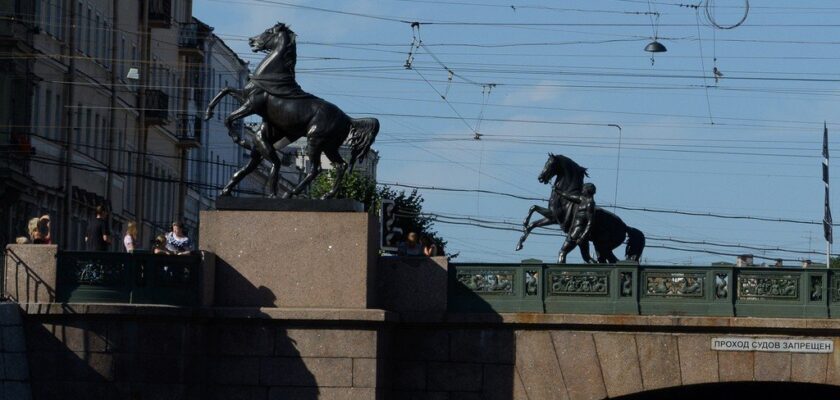Anichkov Bridge
Anichkov Bridge is one of the most famous bridges of St. Petersburg, whose history is closely connected with the founding of the Northern Capital. The bridge itself is not a masterpiece of architectural thought; it became a hallmark and decoration of St. Petersburg thanks to the magnificent sculptures of sculptor Pyotr Klodt.
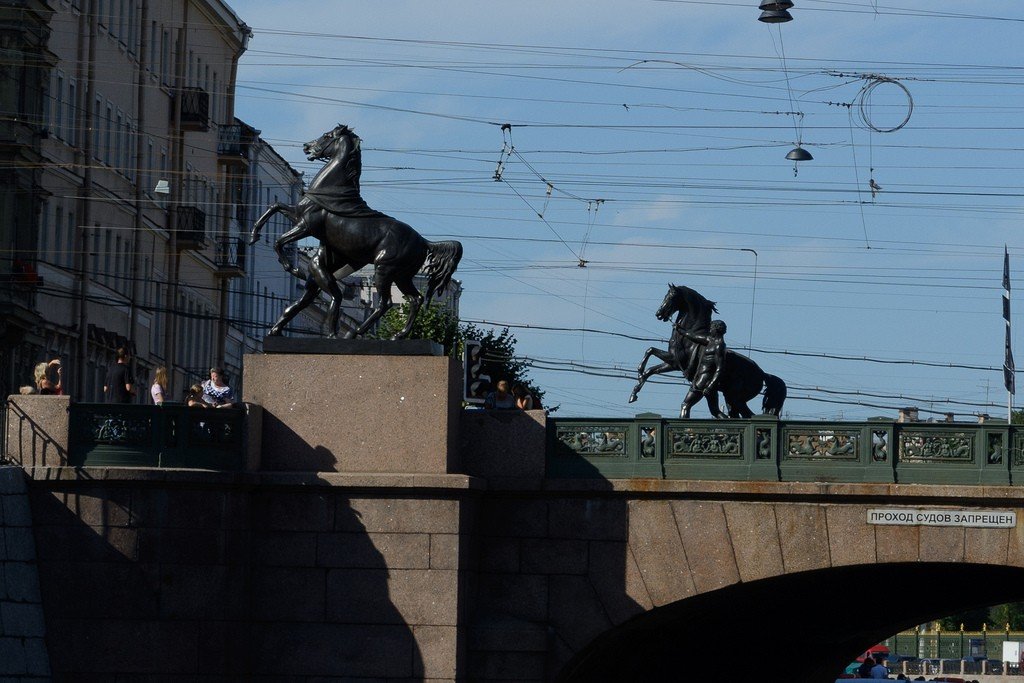

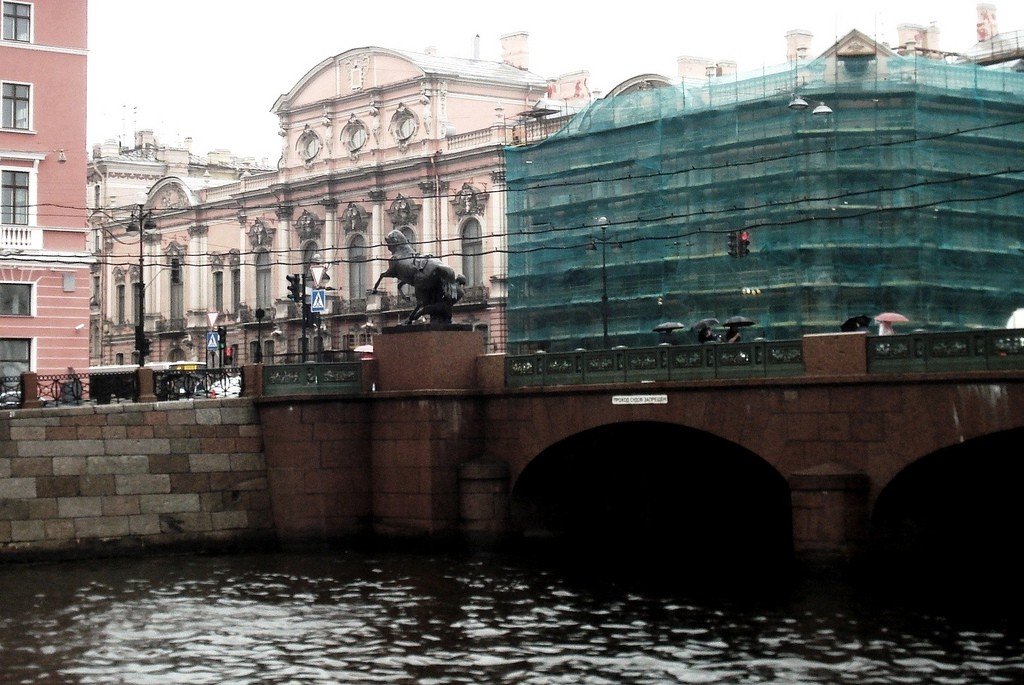
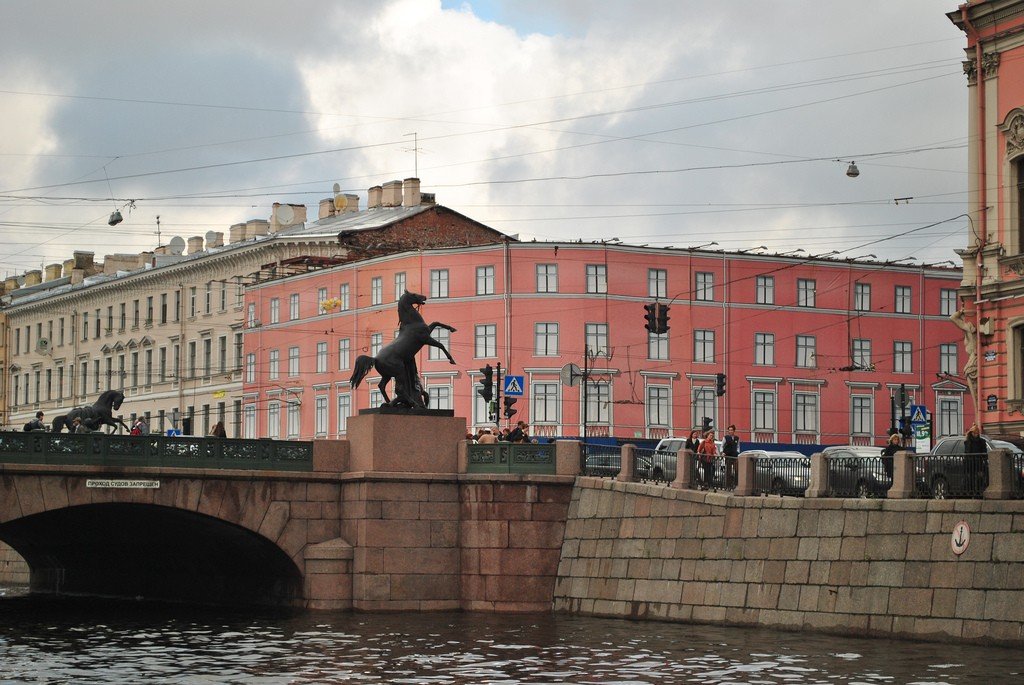
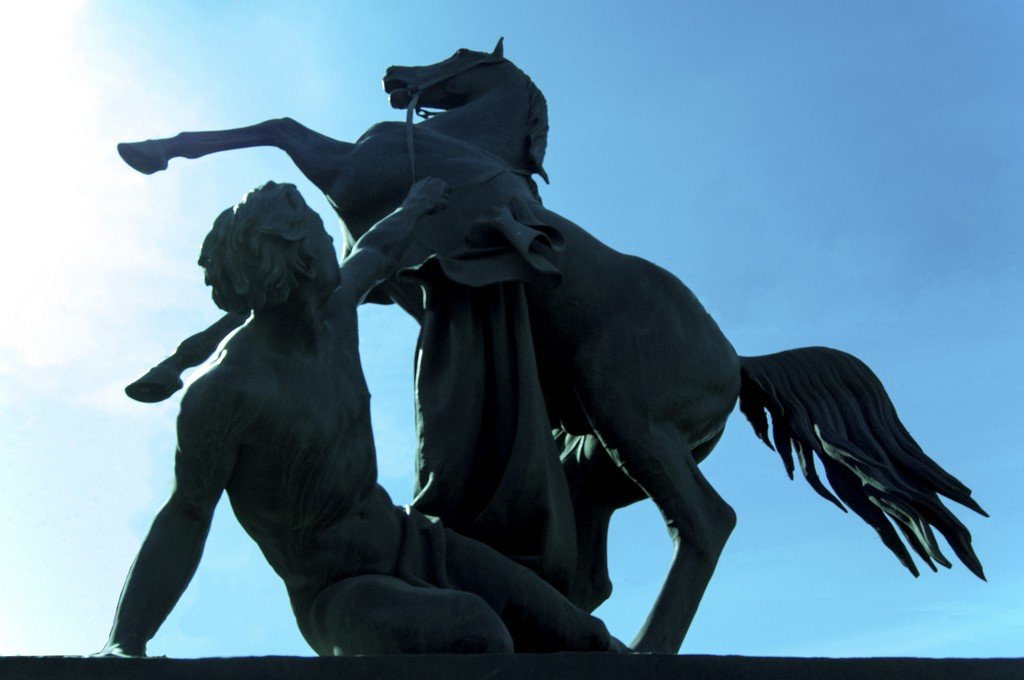
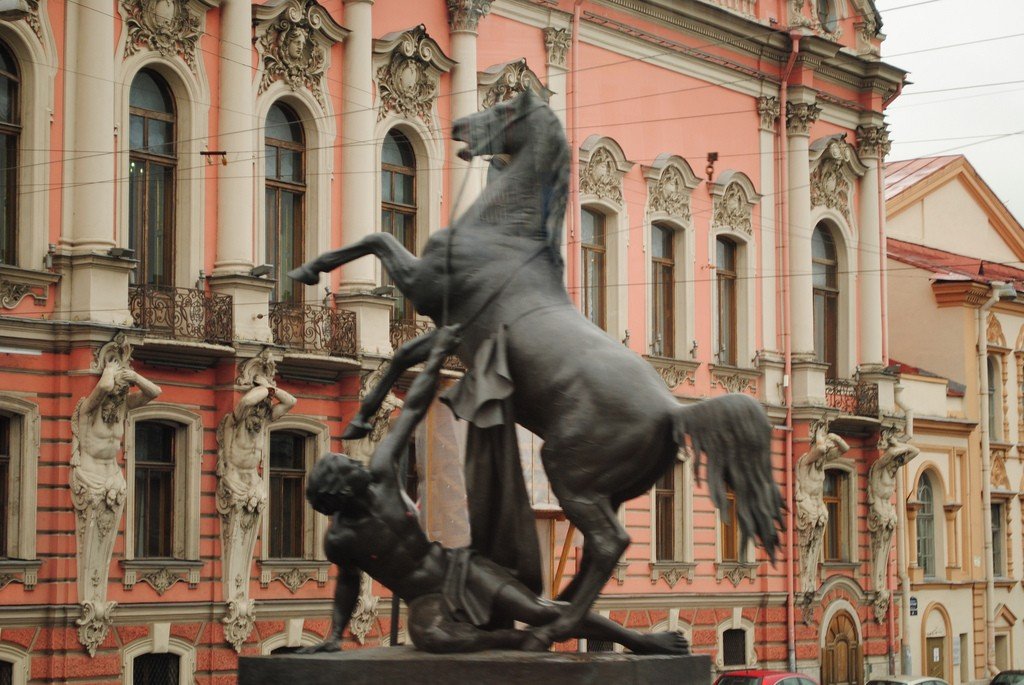
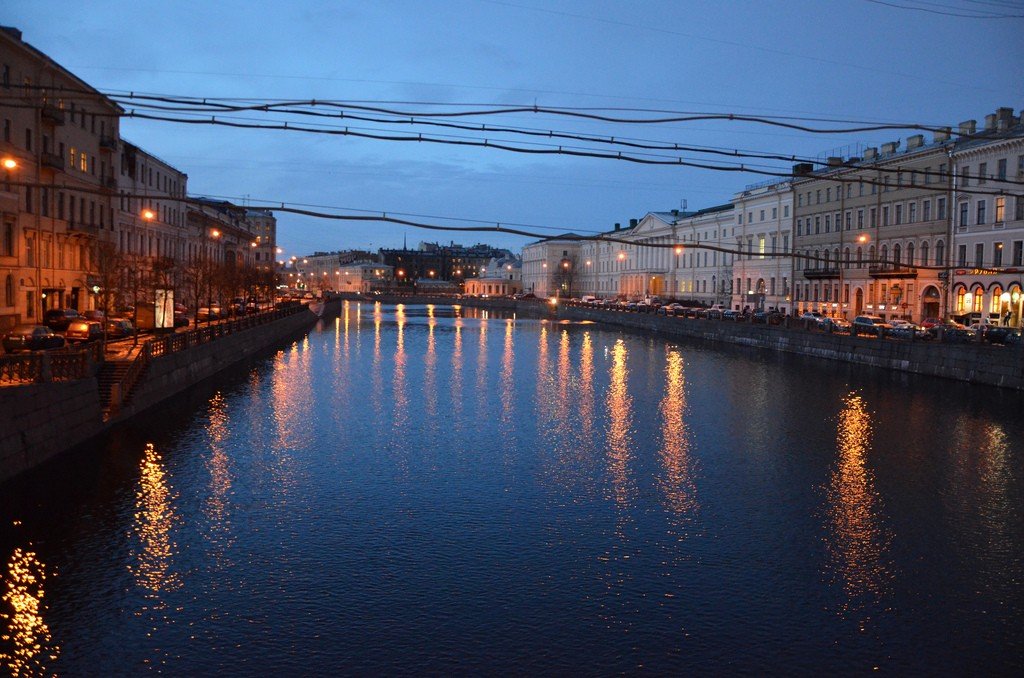
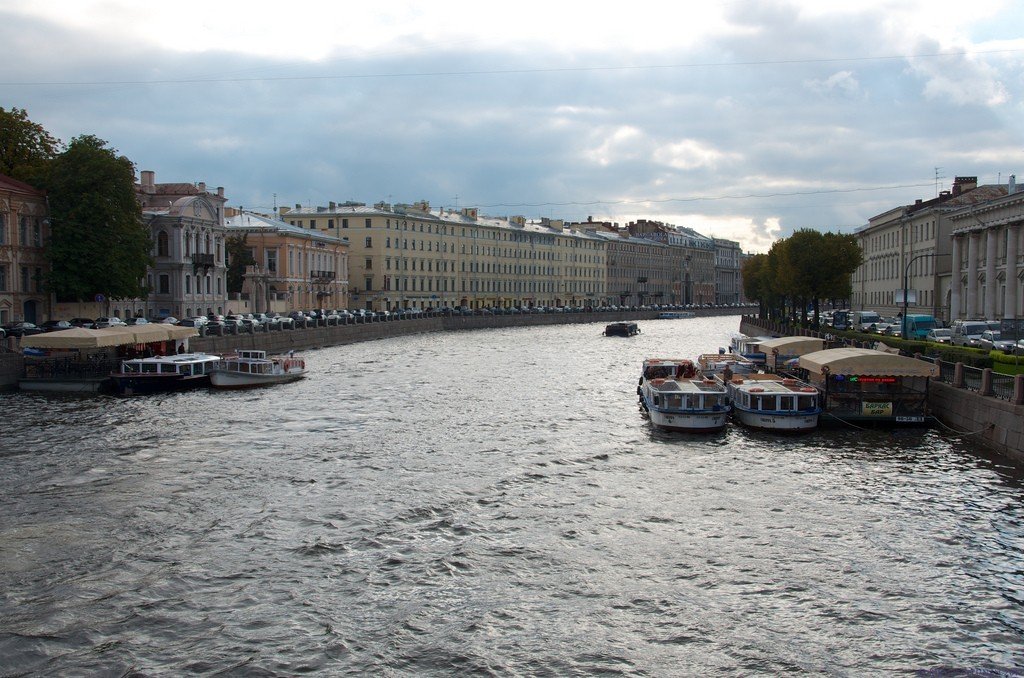
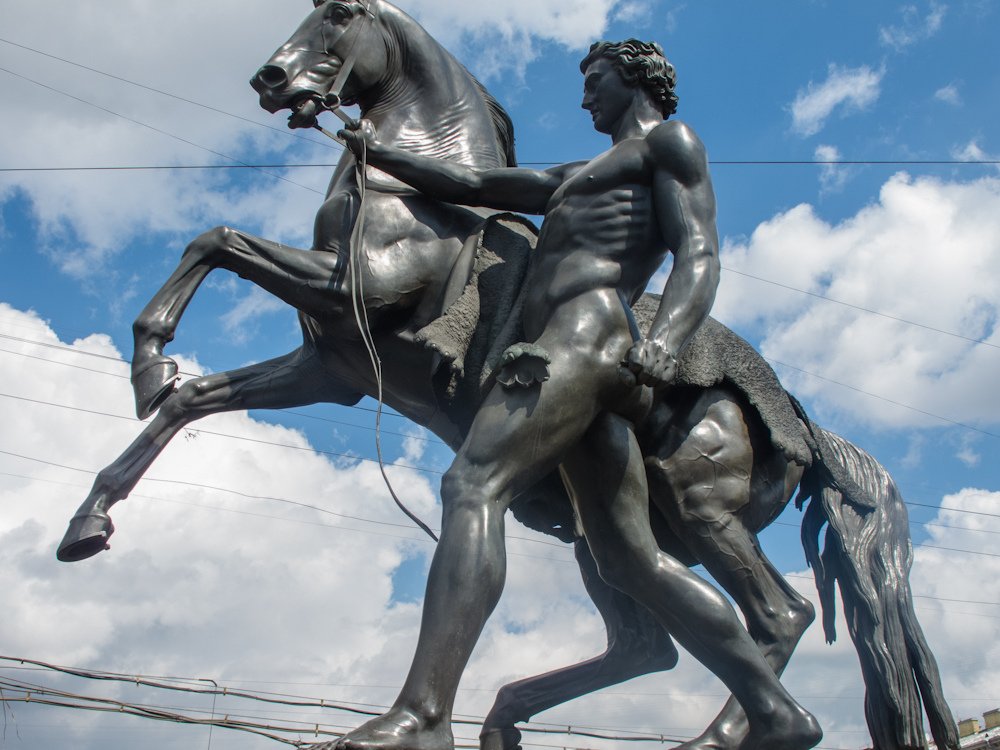
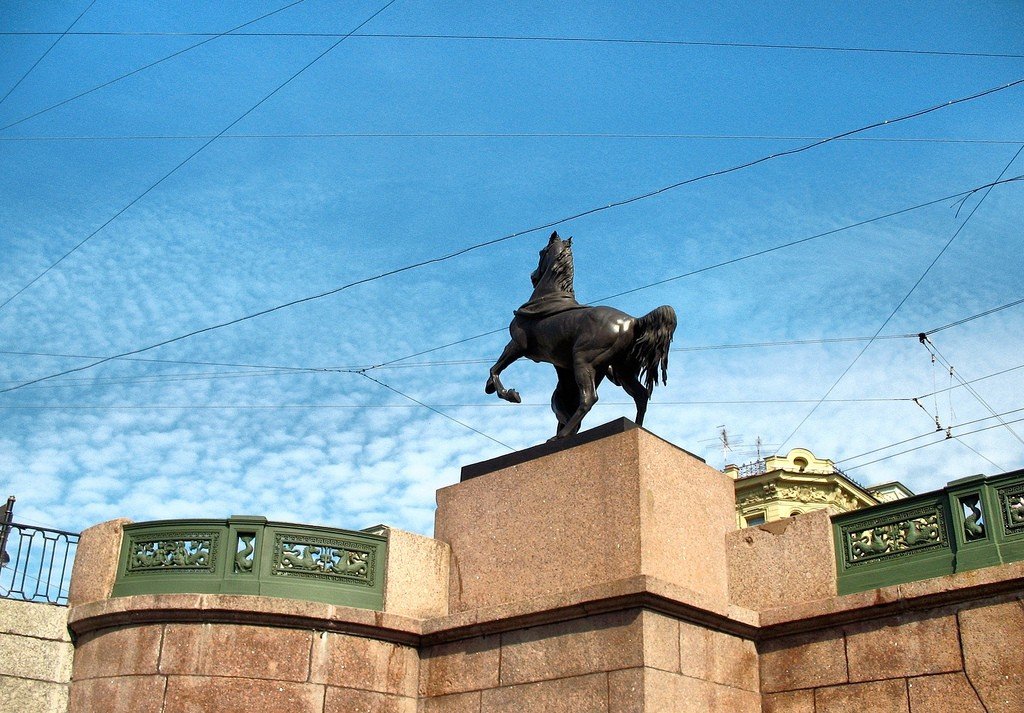
History of Anichkov Bridge
In the early 18th century, the Fontanka River in St. Petersburg was called Bezymyanny Yerik. And it got its modern name after the pipes for the fountains of the Summer Garden were laid through it. In those times the river was a serious obstacle for equestrian transport and pedestrians. St. Petersburg, which was under construction, urgently needed a bridge.
.
In 1715 Peter I issued a decree to build a permanent crossing of the river, for which 50 rubles were allocated from the treasury. And soon a wooden planking 150 meters long appeared in the place chosen by Peter. The supports were covered with simple planks and stylized as stone. The construction work was led by Lieutenant Colonel of Engineers Mikhail Anichkov, whose surname was forever enshrined in the name of the bridge. For the passage of ships under the bridge, the crossing was equipped with removable wooden shields, which were raised and returned to the place manually.
.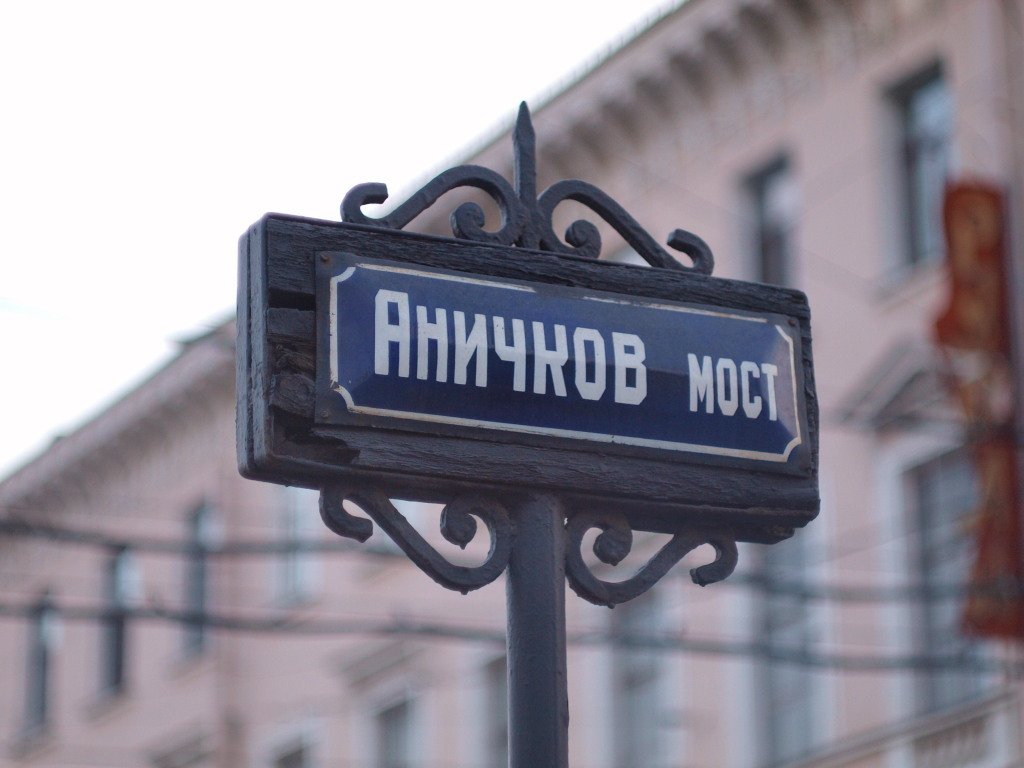
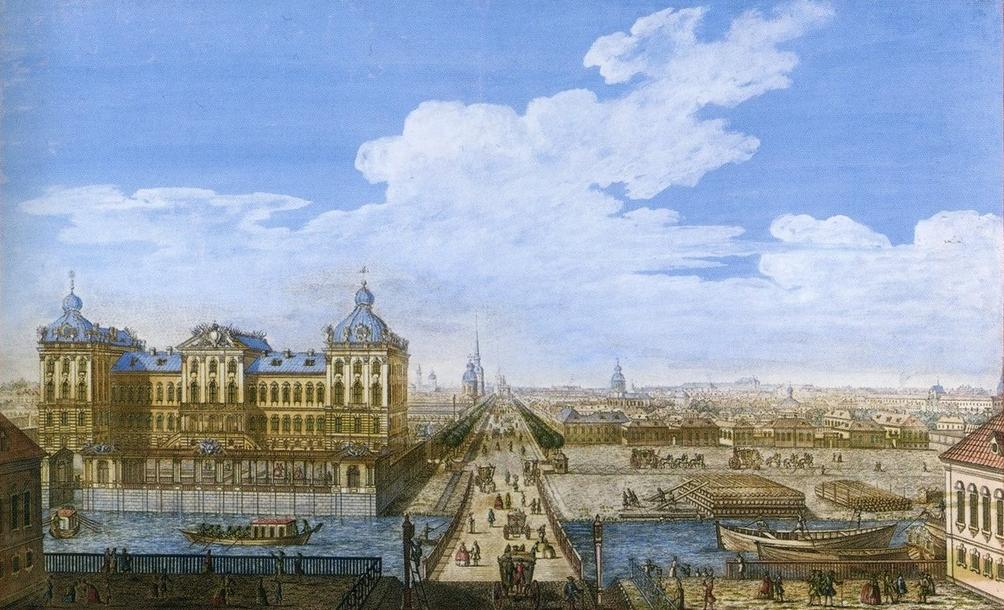
In front of Anichkov Bridge there was an outpost – nowadays its place is occupied by a building at number 66 on Nevsky Prospekt. The bridge was blocked by a barrier, and money was charged for traveling over it. Stones were also accepted as payment – they were necessary for paving the city streets. After sunset, only noblemen could enter the city through the bridge. For people of ignorant origin the passage was closed until dawn.
.
In 1718, the Persian Padishah presented Catherine I with a gift of horses and nine elephants, and Anichkov Bridge had to be significantly strengthened for the passage of animals.
.In 1721, the crossing was rebuilt again – now its central part was raised by chains and lever mechanism. At night, the bridge remained in a raised state, – so St. Petersburg was protected from wolves, who often ran in those days to the city outskirts.
.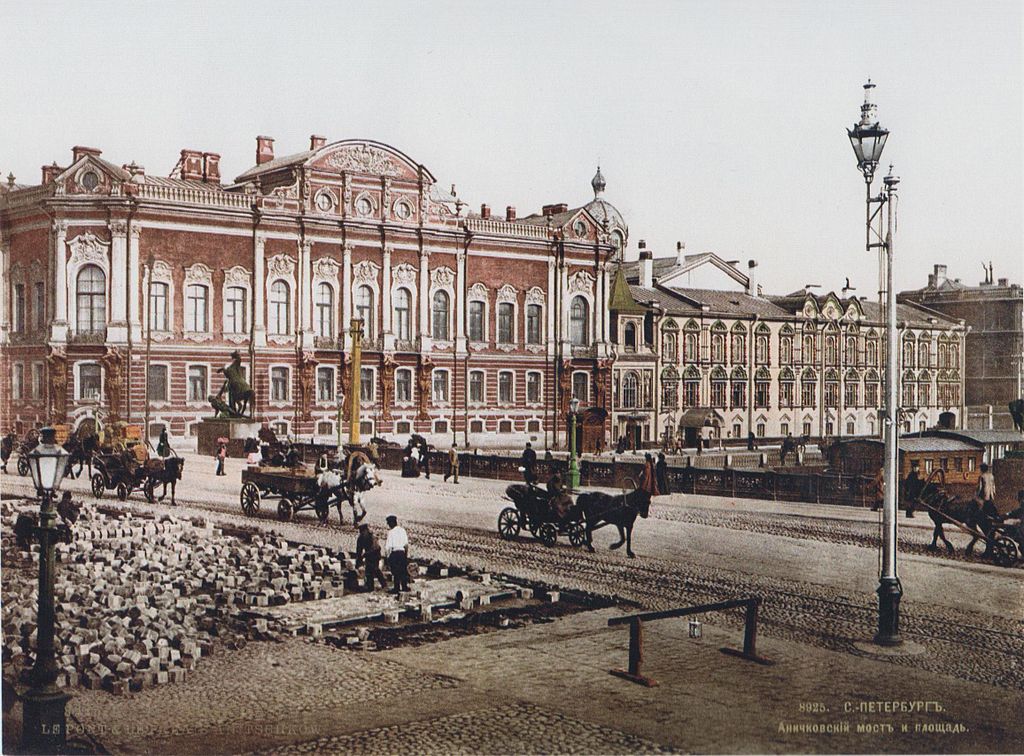
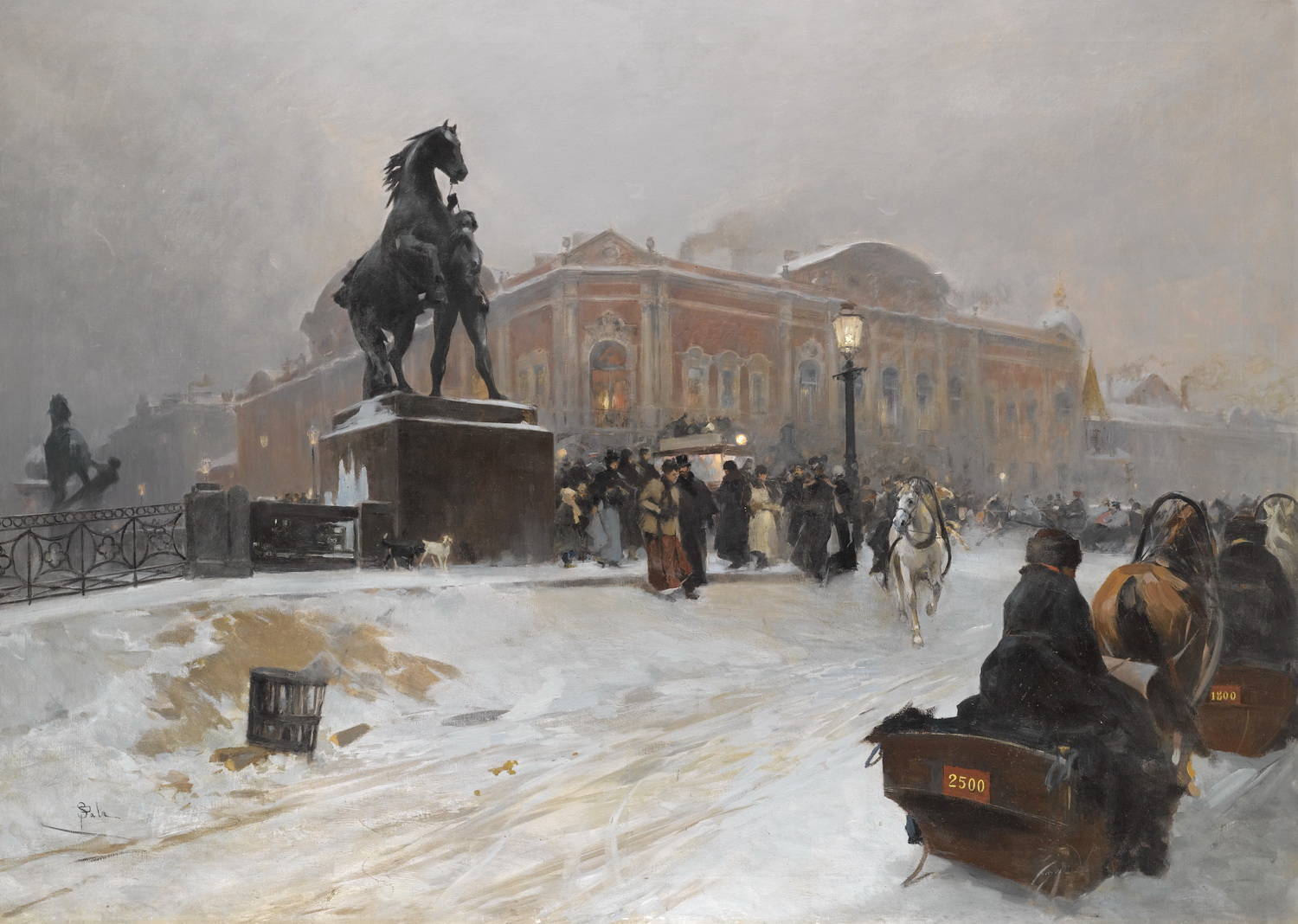
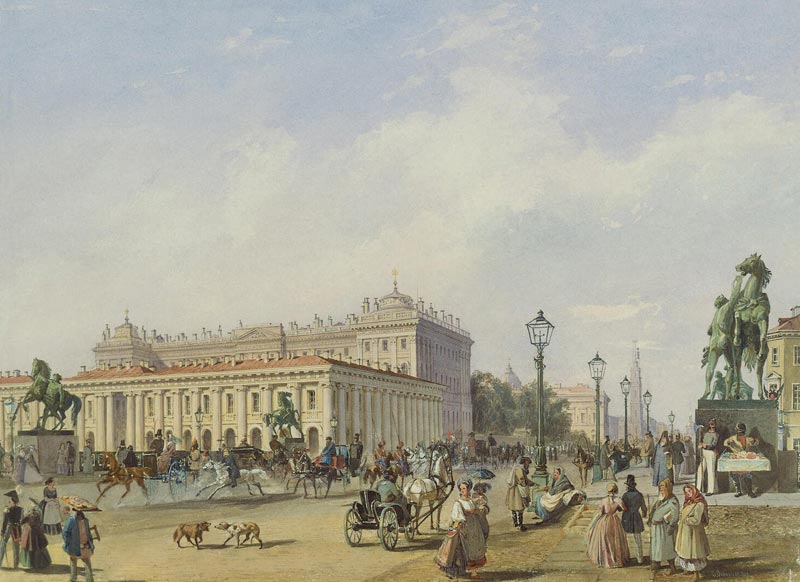
In the 80s of the XVIII century the old bridge was demolished, and in its place an improved structure was erected: the side spans of the new crossing were faced with stone, and the middle, wooden part was raised by a special device with the participation of only two people. The design of the structure was standard, similar were 7 other bridges located on the Fontanka River.
.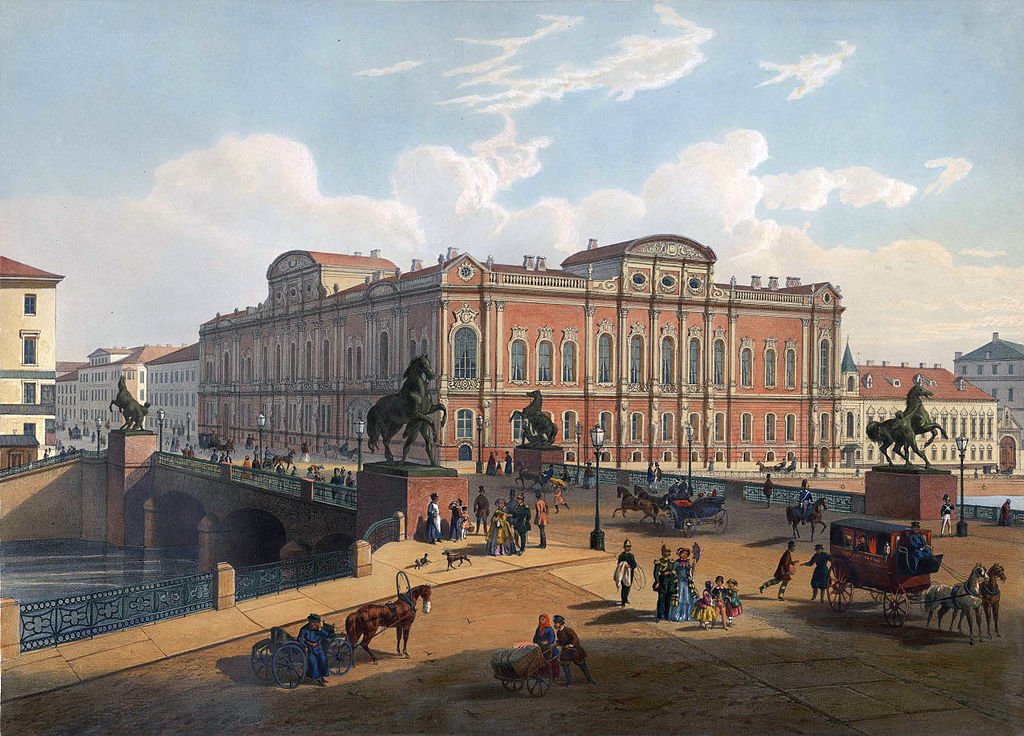
It was supposed to decorate the crossing with large vases for which pedestals were installed. But instead of vases on the bridge there were sculptures created by the St. Petersburg sculptor Pyotr Karlovich Klodt: “A Horse with a Young Man Walking” and “A Young Man Taking a Horse under the Saddle”. On one side of the bridge bronze figures were installed, and on the opposite edge of the bridge their plaster twins, painted in bronze, were placed. The plaster figures were supposed to be replaced by bronze ones, but when the statues were ready, Nicholas I presented them to the Prussian king. Several times Klodt created new statues, and each time the Russian emperor presented them to some European monarch. After a few years, the sculptor decided to put an end to copying and made new compositions united by one storyline – the taming of the horse, the victory of man over the wild force.
.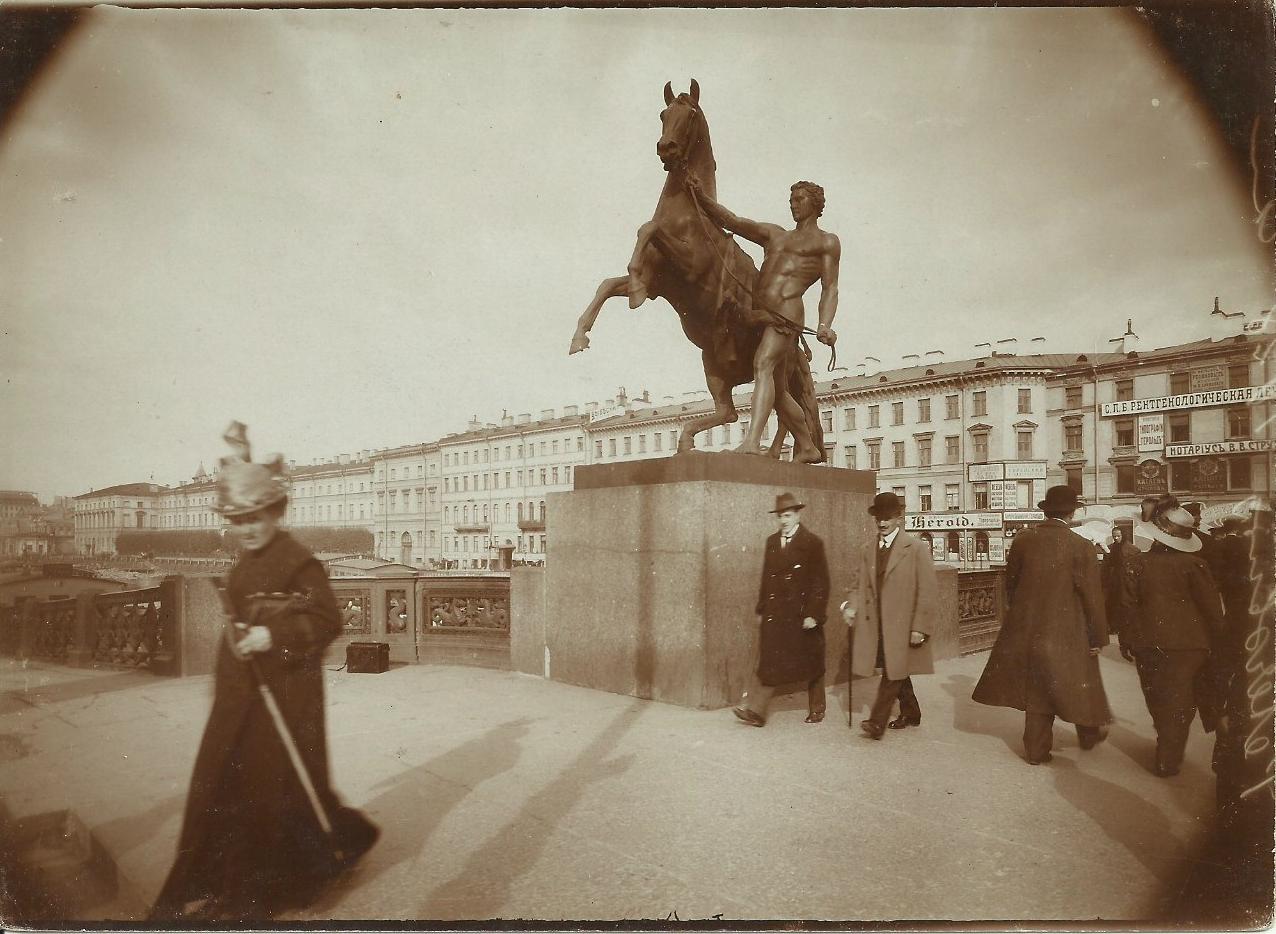

St. Petersburg residents enthusiastically received Klodt’s creations. The press at cross-purposes praised the talented sculptor. The sculptor received praise and attention of the Tsar himself – in 1841, shortly after the ceremony in honor of the opening of the bridge, Nicholas I granted Klodt the Order of St. Anne of the third degree.
.
Then the famous frivolous nickname of the crossing was born – “The Bridge of Eighteen Eggs”. When counting the elements of the male procreative organ was taken into account and the town guard, whose post was located on the bridge until 1917.
.
By the beginning of the XX century the bridge was deformed in many places, urgent reconstruction was required. In 1908 the crossing was rebuilt, fully preserving its appearance. After the repair, a plaque with the inscription “Anichkin Bridge” was attached to one of the piers. The descendants of Mikhail Anichkov pointed out to the city authorities the incorrect spelling of the surname of their famous ancestor and demanded to correct the mistake. Officials from the city duma found the necessary documents in the archives and soon restored historical justice.
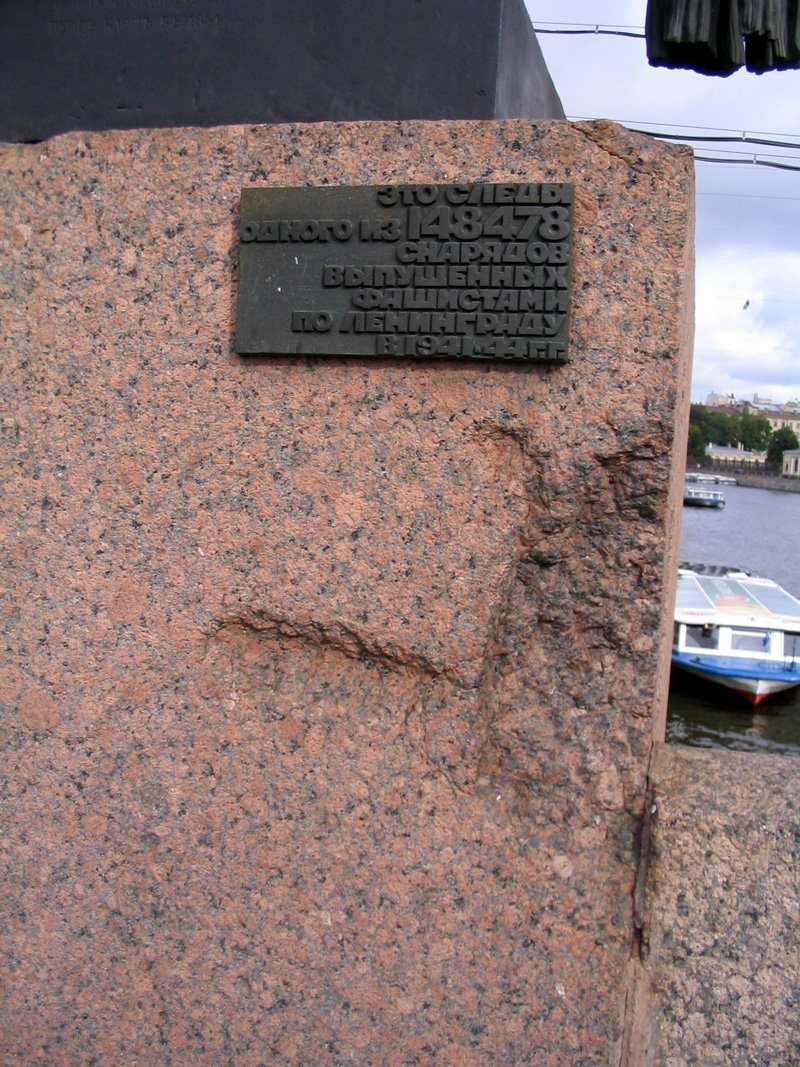
Sculptures
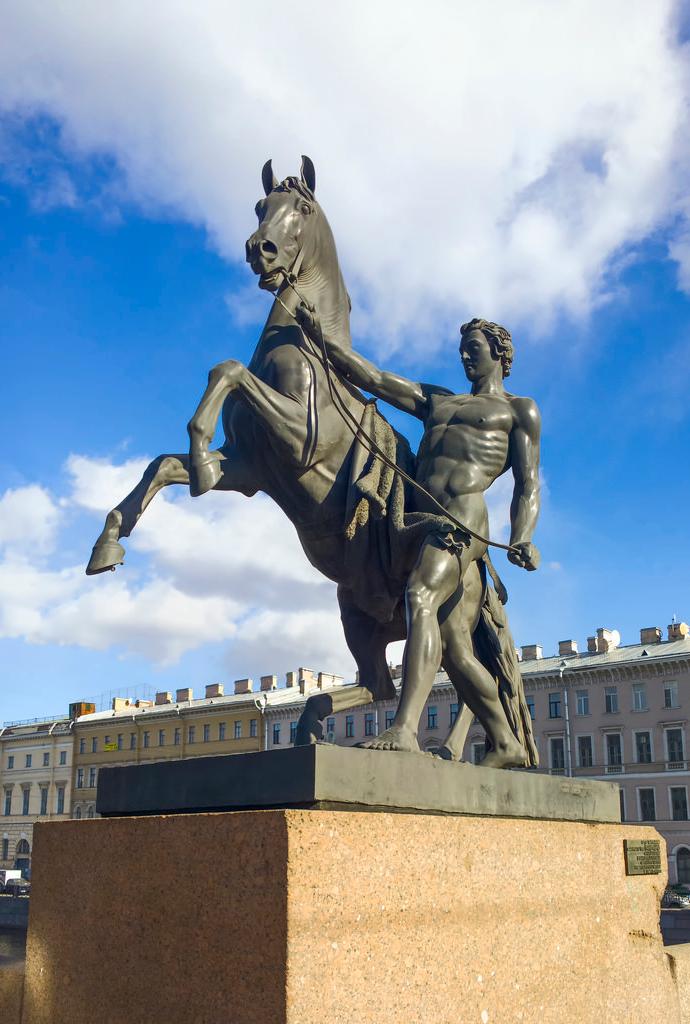
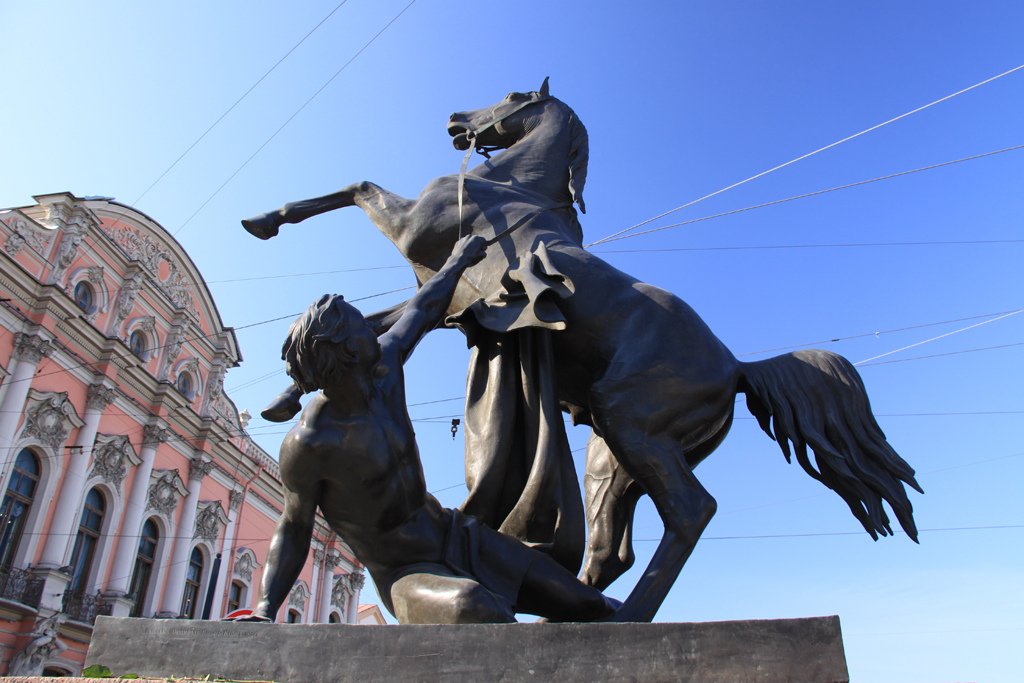
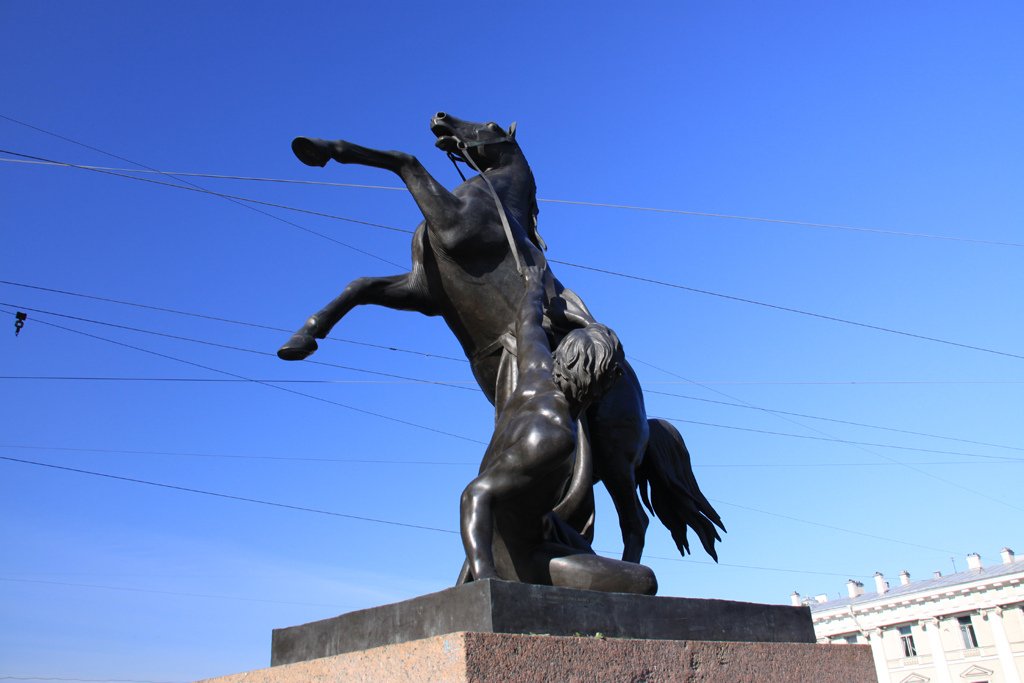
About the sculptor
‘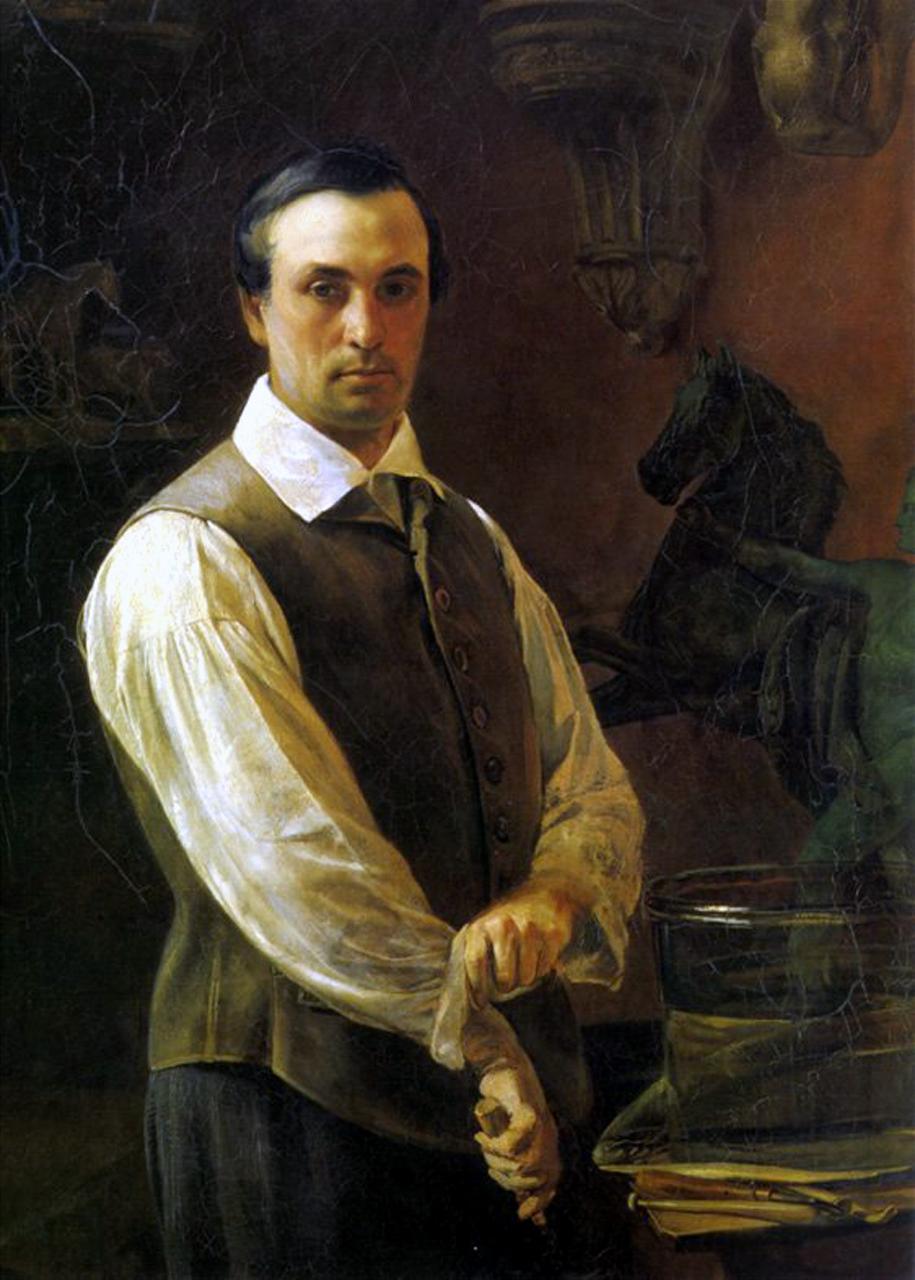
Apart from the famous horses on the Anichkov Bridge, the sculptor’s works include: the monument to Nicholas I at St. Isaac’s Cathedral, famous for being the first equestrian monument in the world to rest on only two points of support; the quadriga of Apollo, which adorns the Bolshoi Theater in Moscow; the monument to the fable writer Ivan Krylov in St. Petersburg’s Summer Garden.
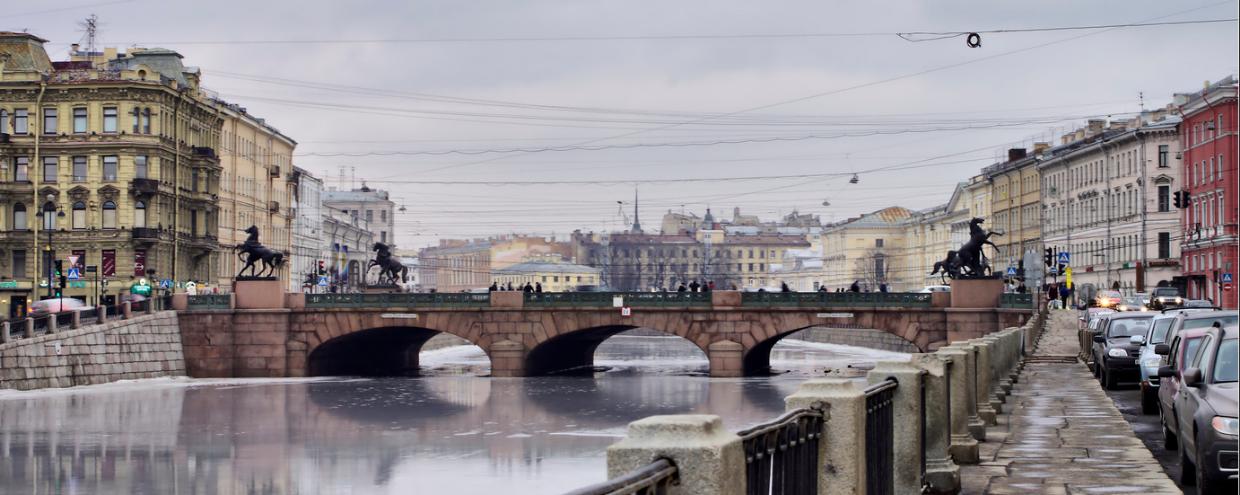
Interesting facts
Klodt sculpted horses from nature – he was posed a purebred Arabian horse Amalatbek. The stallion was wild and unruly, but the sculptor was able to ride him around. In his work, Klodt was helped by his daughter, who forced the horse to take the necessary poses.
.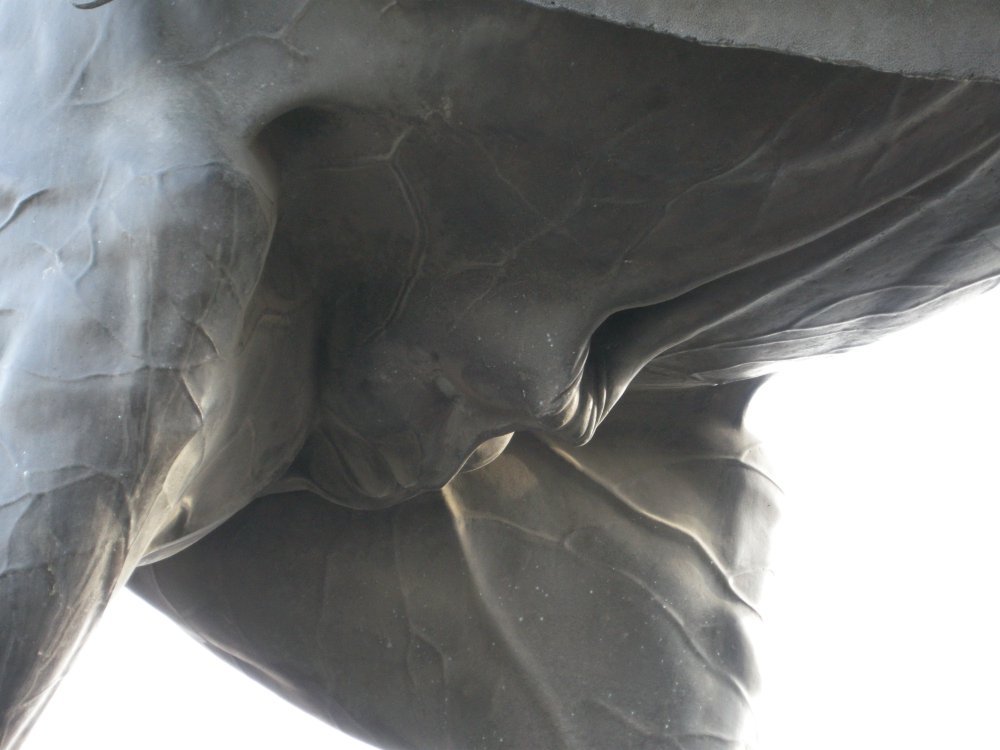
The outline of the intimate organs of one of the stallions surprisingly resembles a human face. According to one version of this coincidence, the sculptor thus took revenge on some of his ill-wishers. According to another opinion, the contours of the horse’s genitalia reproduce the face of Napoleon, who not so long ago passed through the Russian land with a devastating war.
.
After each reconstruction, the city authorities tried to secure the name “Nevsky Prospekt” for the bridge, but it did not take root.
.During World War II, fascist propaganda spread a photomontage – German soldiers standing by Kłodt’s horses. With their provocative poster, the Nazis wanted to make the whole world believe that Leningrad was supposedly already captured.
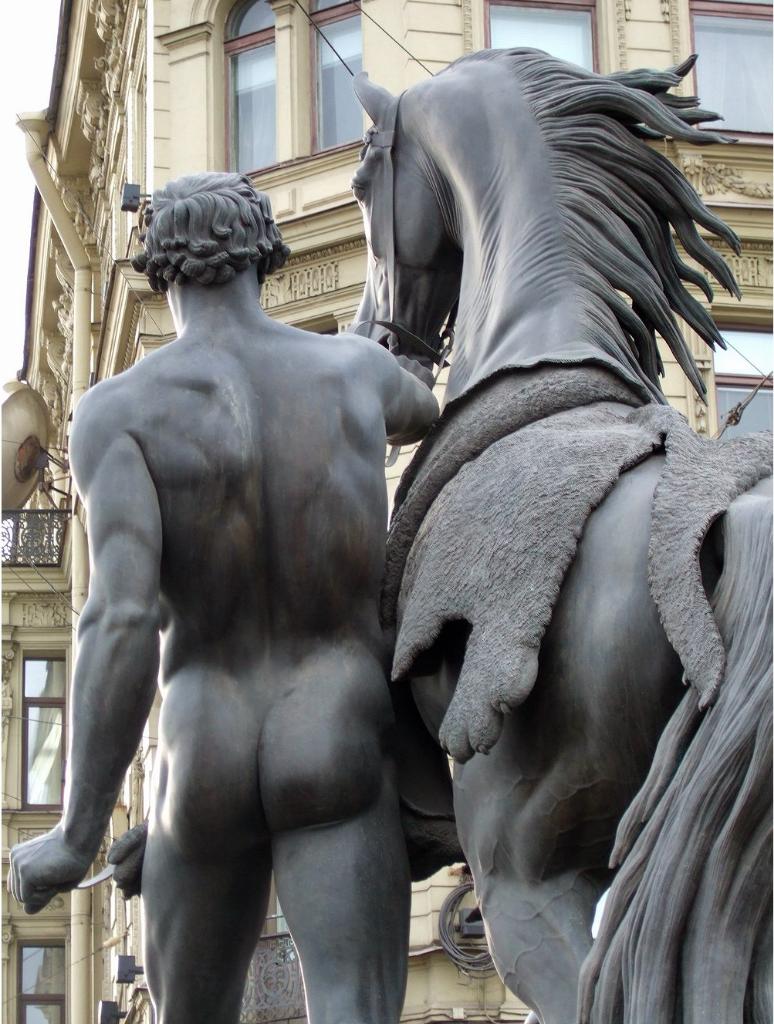 ‘ Marley’s Horses in Paris
‘ Marley’s Horses in ParisVisitors to St. Petersburg, thinking that the bridge is associated with a certain Anichka, mispronounce the name of the bridge by stressing the first letter in the word “Anichkov”. The correct pronunciation is Anichkov, stressing the second syllable.
.During the dry law, introduced in the USSR in the 80s of the last century, was born such a saying: “In St. Petersburg do not drink only four people, they have no time – they keep horses.”
.Similar compositions decorate the entrance to the Parisian Champs Elysees.
.Nowadays, Anichkov Bridge is 54.6 meters long and almost 40 meters wide.
.
How to get there
From metro stations “Gostiny Dvor” or “Nevsky Prospekt” you need to walk along the avenue in the direction of increasing numbering of houses. From the stations “Mayakovskaya” or “Ploshchad Uprisinga” one should move in the direction of decreasing numbering.
.Near Anichkov Bridge you can see the following sights: the Church of the Savior on the Blood, Anichkov Palace, Summer Garden, Russian Museum, sculpture of Chizhik-Pyzhik, Fountain Court, Palace of Beloselskikh-Belozersky, Mikhailovsky Garden.
.